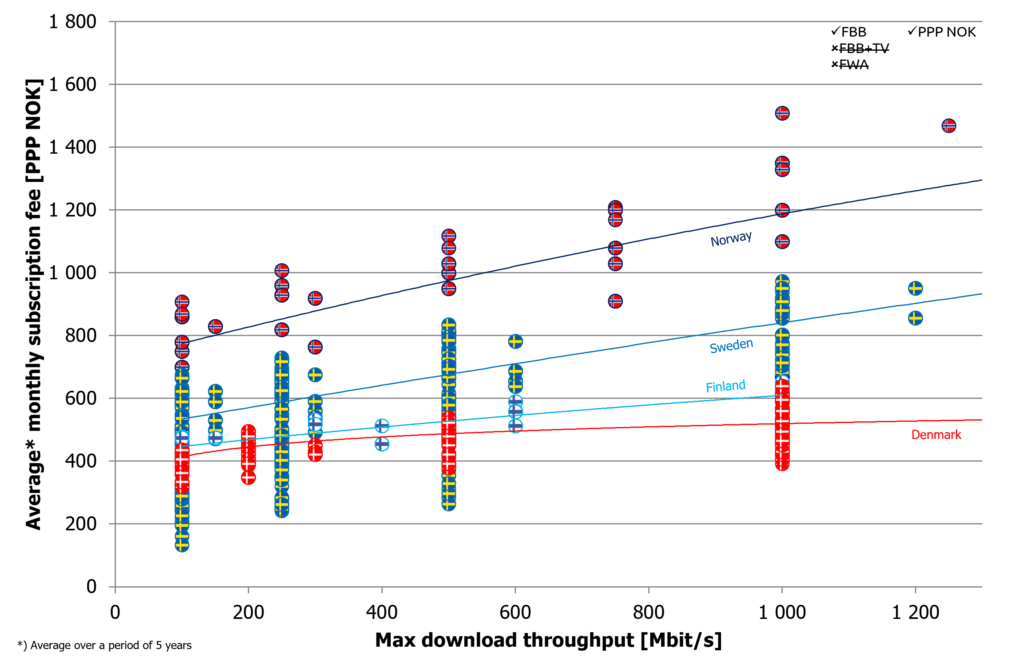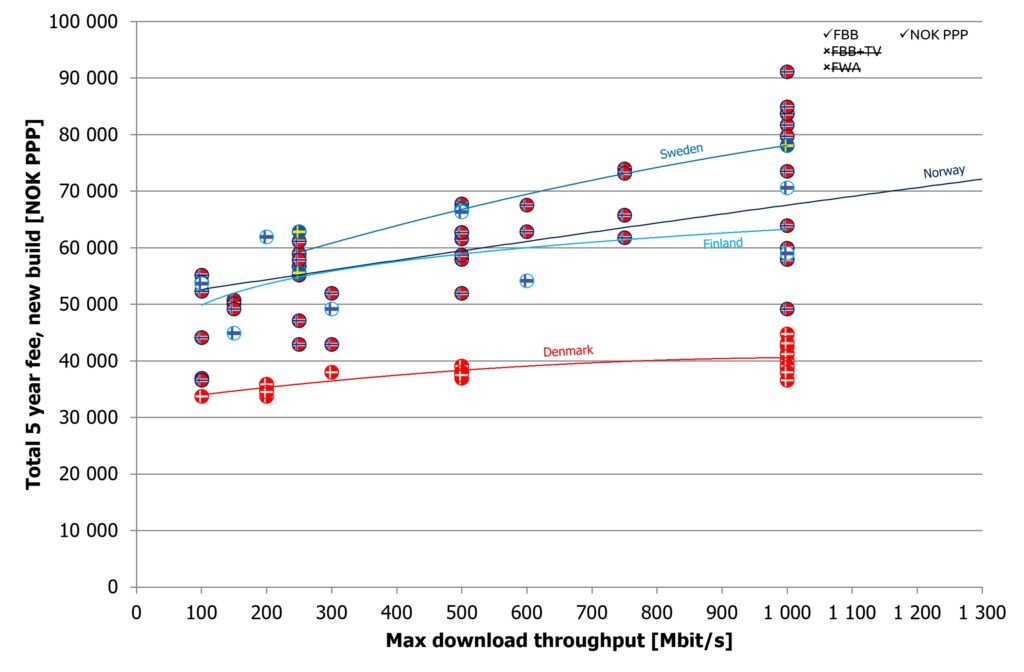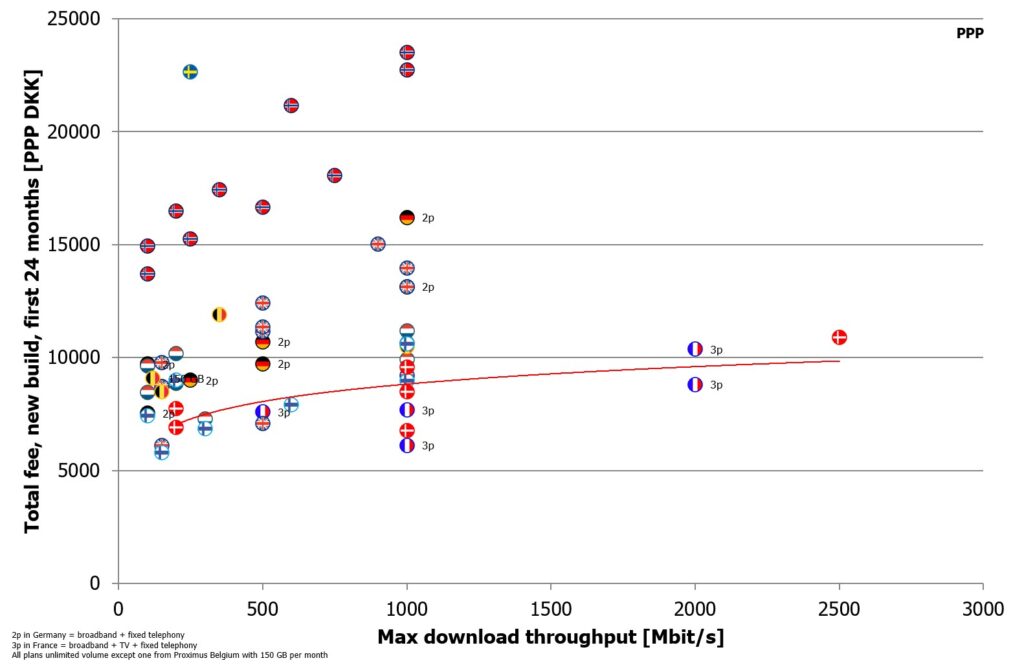Reference: Analysis, 2024

Norway’s Ministry of Digitalisation and Public Governance today published two analyses commissioned from Tefficient.
The conclusion is summarised (in Norwegian) in a press release from the Ministry.
Both analyses are very comprehensive and compare Norway to the three fellow Nordic countries Denmark, Sweden, and Finland. It means that they are highly interesting not just for the industry and policy makers in Norway, but in all four countries.
An example graph from the fixed analysis shows how the average monthly subscription fee compares between different plans with different maximum download throughput:




